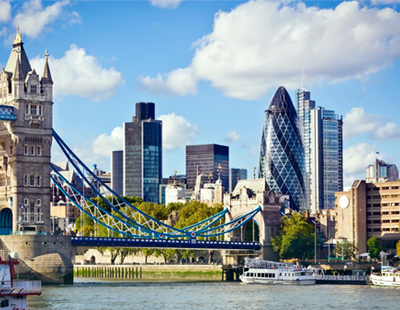
The London agency Bective says the prime areas of the capital have enjoyed an eight per cent uplift in rental values over the last year, with the most in-demand areas seeing a jump of as much as 29 per cent.
Its analysis of LonRes data shows that despite a tough period for the London property market the capital’s prime neighbourhoods have found their feet over the last 12 months, with all but four demonstrating upward growth in the average rent achieved.
On average, monthly rental values across these high-end neighbourhoods now sits at £1,078 per week - up eight per cent from £998 per week a year ago.
Bayswater and Maida Vale has seen the biggest increase. At £1,205 per week, rental values are now 29 per cent higher per week than this time last year. Kings Cross and Islington have enjoyed a 24 per cent rise with Fitzrovia, Bloomsbury and Soho up 20 per cent each.
Several other areas have enjoyed double-digit rental growth including Fulham and Earls Court, Hampstead, Hammersmith & Brook Green, Chiswick, North Kensington, Knightsbridge & Belgravia, Chelsea, Richmond, Kew & Sheen and St John's Wood, Regents Park & Camden.
In contrast, rental values in Marylebone have fallen 13 per cent since this time last year, with the Midtown, City & City Fringe area and South Kensington seeing smaller declines. Kensington, Notting Hill & Holland Park have remained flat.
At £2,157 per week, Knightsbridge and Belgravia remains the most prestigious pocket of the prime London rental market in terms of the outright cost of renting, followed by Mayfair and St. James’s (£2,123) - the only other area where weekly rental values exceed the £2,000 threshold.
Canary Wharf and the Docklands is the most affordable pocket of the prime rental market with the average weekly rent averaging just £496.
Bective Head of Lettings and Property Management, Tom Dainty, comments: “2021 has been a good year for the prime rental market, all things considered. Typically renting within the prime market is driven by lifestyle rather than necessity, such as work for example. So the market hasn’t suffered to the same extent from the exodus of London professionals looking outside the capital for cheaper rents while working at home.
“At the same time, we’ve seen an uplift in demand as travel restrictions have eased and foreign interest has returned to the London market. In many cases, those with a long term view of homeownership are choosing to try before they buy via the rental market to ensure a particular neighbourhood is right for them before committing to a purchase.
“As a result, larger family houses have been renting at exceptional speeds and a real shortage of suitable stock has seen eager tenants offer above and beyond asking rents to secure them. This has been the predominant factor behind the sustained health of the prime rental market, although we are now seeing enquiries for apartments start to climb once again.”







-400x310-min.jpeg)







%20-%20IMAGE%20Client%20Accounting%20%E2%80%93%20what%20are%20your%20options.jpg)




Join the conversation
Jump to latest comment and add your reply
As a company who only rents property in Marylebone I would say they are completely wrong in their assessment of the market in this area. I guess having no office in Marylebone they are just sticking their finger in the air. In fact rental prices are now slightly higher than pre0pandemic levels, the lack of stock is enabling us to let properties within hours of them coming available! I would be delighted to review their evidence of a 13% fall in values and help them out as they plainly have no idea of what is happening in Marylebone!
Mathew, its probably because you have the market in Marylebone they have little sight of it. However rents are considerably less in the rest of Britain..
Please login to comment